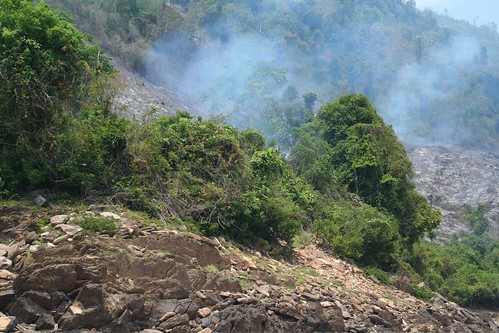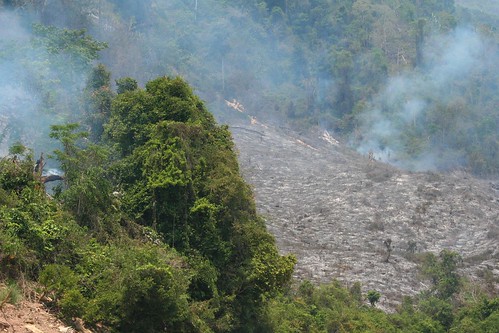VIENTIANE, Laos - The mighty animals that made Laos the Kingdom of a Million Elephants are mostly gone. And every year the forests that once blanketed the country from end to end are replaced by more bald hillsides and scrubland where hardly a birdsong is heard.
Long spared the depredations that scarred neighboring Vietnam, Thailand and China, Laos' 5.6 million people still enjoy a high ratio of water and forest resources, including 800 bird and 100 mammal species ranging from tigers to the recently discovered giant muntjack and saola.
But conservationists are alarmed at what has been eradicated in less than a generation. They fear that minimal environmental programs run by creaky Communist Party machinery, riddled with corruption and supported by limited foreign aid, has no chance to slow the destruction.
They argue that short-term profits from profligate logging and other ventures will be a disaster in the long run.
Laos is one of the world's poorest and least developed nations, and the pressure is intense to build hydroelectric dams and sell off tropical forests, legally or otherwise.
Traveling the 280-mile length of National Highway 13, which runs north-south through the heart of Laos, the only patches of viable forest are inside ravines or on mountain slopes too steep to log. During the dry season, smoke from woodlands cleared for farming cast a hazy shroud.
Forest cover has shrunk from 70 percent of Laos' total area in the middle of the 20th century to less than 40 percent today - and possibly far lower, environmentalists say.
Many woodlands are described as "dead" because of over hunting.
Near the northern town of Udomxai, a Kamu tribal girl holds up two dead civet cats by their tails alongside several braces of tiny birds, trying to tempt passing bus passengers. In the town's market, civet meat, selling for 90 cents a pound, lies next to the carcasses of multicolored parrots and other forest creatures.
Wildlife also is used in traditional medicines and tonics, such as a concoction of leaf monkey, porcupine stomach and bamboo rat mixed in alcohol that is said to infuse its drinkers with the power of trees (because all three animals feed on them).
But experts say traditional local consumption isn't the real threat to wildlife
Source: http://www.thepost.ohiou.edu/Articles/Culture/2004/02/12/1905/
|
|
||



|

